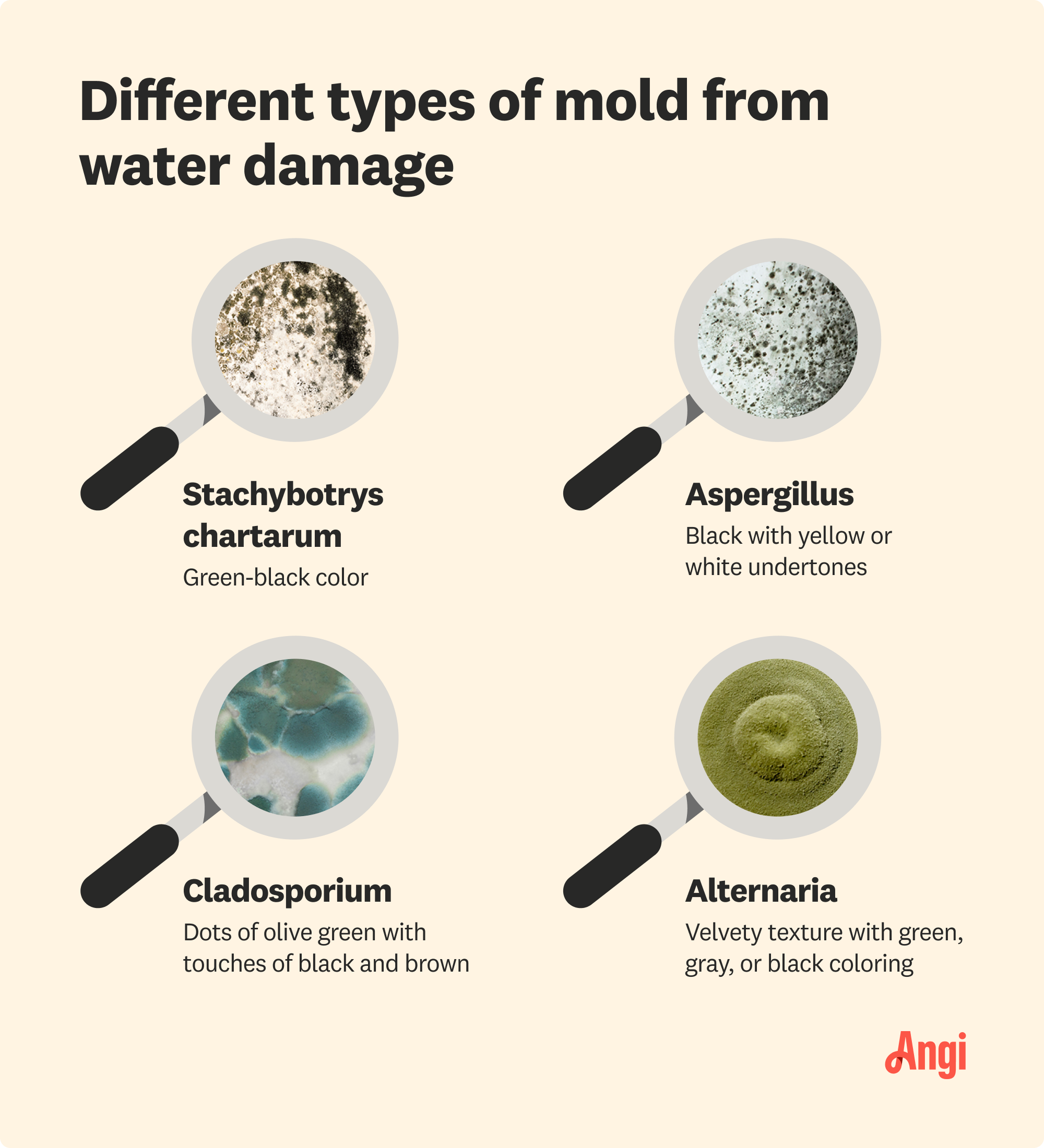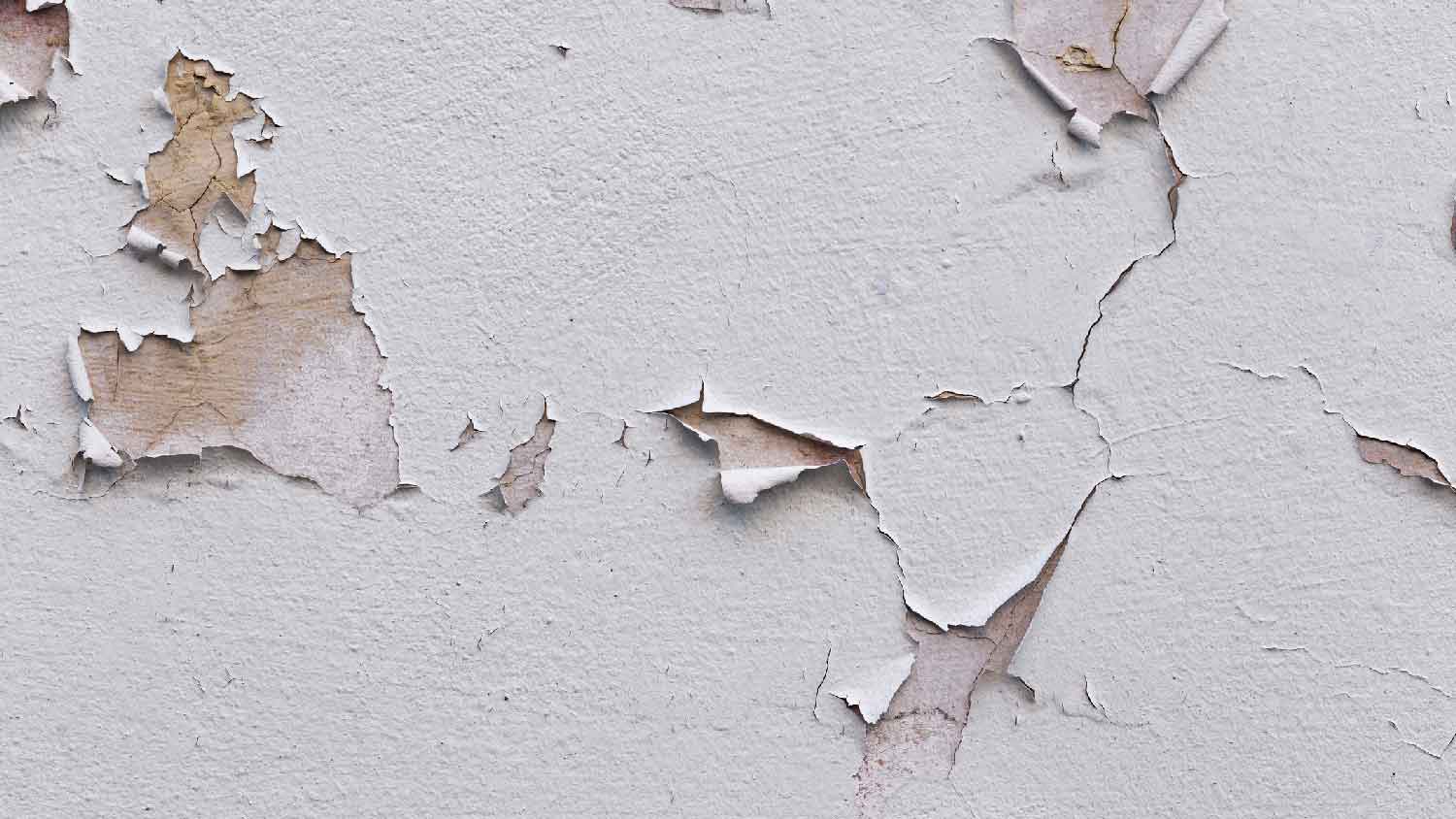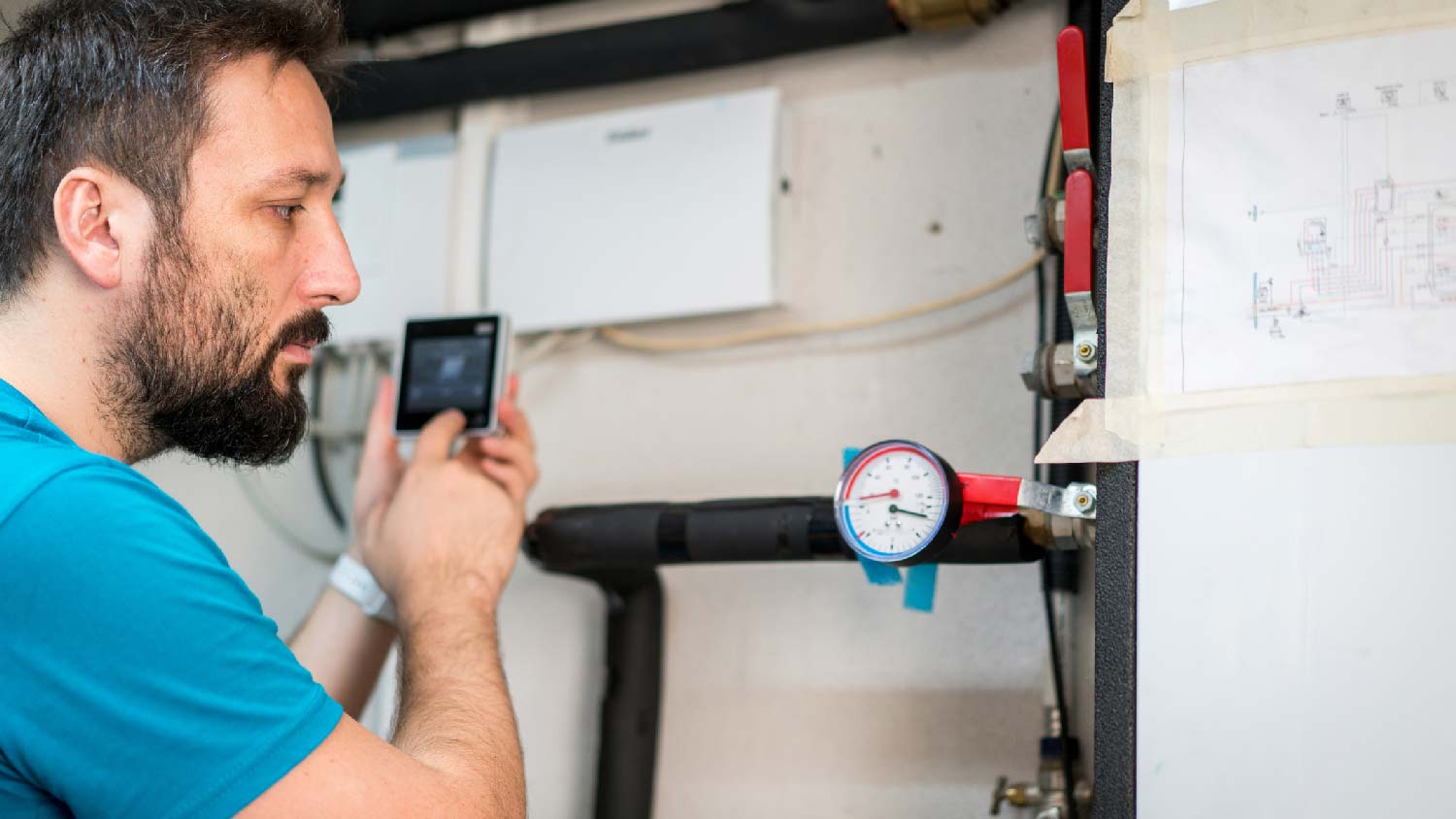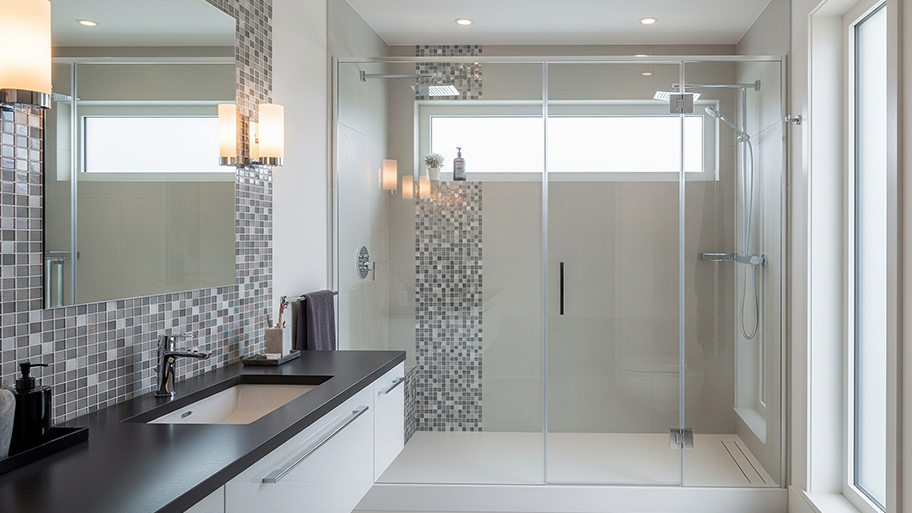
Need to get rid of lingering smoke odors in your home? Learn how much smoke remediation costs to budget accurately for this major undertaking.
Spot more than just wet spots


The most obvious signs of water damage include wet spots on drywall or other building materials and bubbling or cracking paint.
You may notice fuzzy, black splotches, musty odors, or allergy symptoms if the water damage leads to mold growth.
Wood will warp in the presence of water and moisture, so look for swelling or buckling on wood floors and cabinet bases.
It's important to address water damage with professional help as quickly as possible to reduce the amount of damage being done.
If you suspect you have a leak or some other water issue in your home, you might be wondering: what does water damage look like? Water damage can take on many forms, and understanding the signs of a problem can help you get a fix underway quickly to avoid worsening damage. Let’s go over what to look for and why working quickly is crucial.
Until you address the underlying cause of your water damage, it will always get worse. Wood rot and mold growth can cause ongoing cosmetic and even structural damage, not to mention that exposure to airborne mold spores can cause allergy symptoms and make respiratory problems like asthma worse. A major mold infestation can even make a home uninhabitable. Lastly, if you have active water flow in your home, your electrical system could be at risk of fire.
With water damage potentially starting from many different places in a home, the signs can look different based on the source of your leakage or excess moisture. Water damage can also present differently based on where water is pooling. Here's a look at the top signs you have water damage in your home.

A strong musty odor is often the first thing that tips off a homeowner to water damage, especially if a leak occurs behind your drywall. Mold growth can begin within 24 hours after water damage, and you’ll notice a moldy odor once the spores become airborne. If you're having a hard time identifying the source of a musty odor, start with the basement or crawl space, then check under and behind plumbing fixtures you have access to. If all else fails, call in a professional to help find hidden water damage.

Stains on your walls and ceilings that have a yellowish or brownish color are another indication of water damage. You’ll see them on upper-floor ceilings if you have a roof leak, on ceilings or walls throughout your home if you have a plumbing leak, or under windows if the window itself is leaking. You might also see evidence of water leaks from ceiling vents if your HVAC system is the culprit.
Is an area of your home experiencing humidity or dampness that doesn't quite make sense? There may be an undetected water leak that is adding moisture to the air. You may notice that a particular room in your home feels colder in the winter or warmer in the summer as a result of increased humidity, and in extreme cases, you might be able to feel that the air is damp and heavy.
While you may not always have visible leaks in your home, your wallet may be leaking money due to a higher-than-average water bill as a result of a leak. A sudden spike in your water bill could be a sign that water is constantly flowing somewhere in your home. You'll want to bring in a plumber immediately to find out where all of this excess water might be pooling.
While phantom dripping noises in your house may have you wondering if you're suffering from an overactive imagination, there's actually a good chance that the sounds are caused by a hidden leak. What can make pinning down dripping sounds especially difficult is that they don't often sound like they are being caused by water. In fact, the subtle rushing or scratching noises caused by moving water can be mistaken for mice or squirrels.

The paint and wood in your home may be giving you clues that you have water damage. First, any peeling paint, paint bubbling on the wall, or soggy wallpaper that you notice is likely caused by moisture that's trapped behind your walls. Warping or sagging floorboards are also common signs of water damage. Finally, feeling any kind of softness in a wall, floor, or ceiling indicates water damage, especially if the water damage leads to rot.
What does water damage look like when there are no visible signs? Your health can sometimes give you clues that you have an issue. In homes where water damage has caused mold, it's common for people to experience asthma attacks more frequently or that are worse than normal, respiratory infections, and allergic reactions, including itchy eyes, itchy skin, sneezing, and coughing.
Musty odors and unexplained sickness can be good ways to diagnose hidden mold from water damage behind walls, but visible mold is also a clear sign of more severe water problems. If you notice black stains on walls, under plumbing fixtures, or on your ceiling, or you see black, fuzzy growth near a source of water, you have a serious water issue that has led to visible mold growth.
Water damage can happen in many areas of the home. Flooring is most commonly affected by water damage, accounting for about 25% of repair visits. Walls, windows, ceiling, and roofs are all also typical locations to find water damage.
Water damage can be dangerous to remediate, so it’s always best to hire a professional. If the signs of water damage occur anywhere near electrical switches or outlets, hire a water damage professional to keep yourself safe from electrical shock and reduce the risk of fire. If you’re dealing with mold or wood rot, hire a pro to ensure the issue gets a permanent fix and doesn’t continue to worsen.
It can also be challenging to identify the source of the issue, even if you know what water damage looks like. If you need help getting a leak diagnosed, you'll need to hire a local plumber to access potentially broken pipes or valves located within your walls, floors, or ceilings. If you suspect that you have a mold problem, the difference between water damage and mold is that a licensed mold testing remediation expert will need to perform an evaluation.
If you catch water damage as soon as it begins, like right after a minor flood, you can address it yourself if you have the necessary tools and are comfortable. Remove standing water with a shop vacuum, pull out and dispose of absorbent materials like carpet and carpet padding, and run blower fans and dehumidifiers in the area for 24 to 72 hours to remove moisture. It’s a good idea to call a pro for buildback when you’re ready, but you can tackle the initial damage and prevent mold growth yourself.
Beyond that, it’s best to hire a local water damage restoration company to address the underlying issue and get a permanent solution in place.

While water damage from weather events or burst pipes isn't always preventable, there are many ways homeowners can avoid water damage. Getting routine plumbing inspections can help you stay ahead of leaks caused by system failures. If you live in an area known for intense weather, verifying that your roof, basement, doors, and windows are all in good condition can help prevent leaks or flooding. Finally, upgrading to an HVAC system with a dehumidifier can help to prevent moisture issues and mold. If you do notice a leak or excess moisture, acting quickly can save you money and help mitigate the water damage. By getting a pro in to begin fixing the issue within 24 hours, you may dramatically reduce the amount of damage.
Water damage restoration costs an average of $3,800, but prices can vary based on the severity of the damage, how much of your home was affected, and any additional services needed to make your home safe and livable. Below are some common costs you may run into when remediating water damage.
Repairing water damage on ceiling: $450–$1,600
Cleaning up a sewage backup in a basement: $2,800
Water-damaged drywall or flooring: $200–$800
Mold remediation cost: $1,200–$3,700
It's important to get multiple quotes from local water damage remediation companies to be able to choose the best option.
From average costs to expert advice, get all the answers you need to get your job done.

Need to get rid of lingering smoke odors in your home? Learn how much smoke remediation costs to budget accurately for this major undertaking.

Water damage restoration costs depend on the severity of the problem, the type of water, and the length of time the damage has been occurring.

Fire damage restoration costs vary widely based on the extent of the damage. Learn how to assess your home and estimate your total after a fire.

Not sure what to do after a house fire? Our guide will walk you through immediate and long-term recovery steps.

Learn the top 8 signs of water damage in drywall so you can identify water damage early, prevent costly repairs, and protect your home from further issues.

If water destroys your home, don’t let it destroy your wallet, too. Use these water damage insurance claim tips to help get quick approval for repairs.